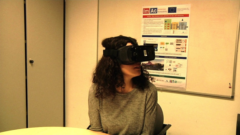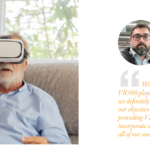User Centred Design (UCD) is a must for any project that aims to offer new solutions or products for end users.
ImAc project has embraced iterative design process where the designers have focused on the potential users and their needs from start to end. When the designers understand the users that they are trying to reach, they build a deep empathy with them, generating successful ideas that will result in innovative solutions.
Given that the project is developing solutions for the production and consumption of accessibility services in immersive media, feedback from professional and end users has been taken into account and consulted in every stage of the project. This collaboration has allowed the consortium to experiment and refine the project throughout its development.
To better understand the users’ needs the project uses a mix of investigative tools & methods (focus groups, tests and evaluations, questionnaires, …) and generative ones (professional know-how, workshops, brainstorming meetings, stakeholders…).
One of the main contacts of the project with end users takes place during the pilot’s phases, where it is possible to test & evaluate the results with real users. Pilots with end users enable to gather their feedback about usability, accessibility, preferences and immersive feelings, but above all it is also an excellent opportunity to receive their opinions, criteria and proposals for an optimum improvement during the next phase of the project.
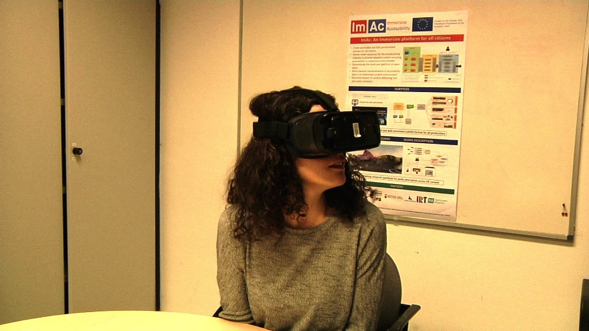
A volunteer user testing subtitles in a HMD
Last May, an intermediate pilot was carried out at CCMA & RBB premises with the purpose of gathering user feedback on two different presentation modes for subtitles in cinematic virtual reality, using a Head Mounted Display (HDM) and a tablet. The pilot comprised about 30 Spanish and German users across different ages starting with the youngest user of 16 years to the oldest of 72 years, with different levels of hearing difficulties.
The highly motivated participants who volunteered to participate in the pilot were aware of the potential impact of their feedback on the development of tools and technologies necessary for the consumption of immersive contents.
The younger participants in general had a higher technological knowledge and this allowed them to provide details and improvements at a more functional level. Even some of the participants were fond of virtual video games or were users of Netflix or Prime players, which is why they had a knowledge base that allowed them to compare the development of the ImAc player with other solutions.
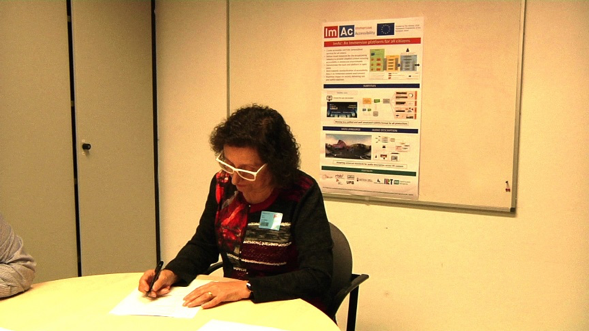
A participant filling the pilot questionnaire
About older people, although it could be said that they are less used to new technologies, it is a group that likes to participate of these tests. This is essential for the developments as they represent the people that requires more the accessibility services and, at the same time, the group with more difficulties to interact with new user interfaces and devices. Therefore, the design of the user interface has to be intuitive and the presentation and configuration of subtitles needs to be appropriate for them, but at the same time, care must be taken to ensure that it doesn’t interfere with the enjoyment of the immersive content.
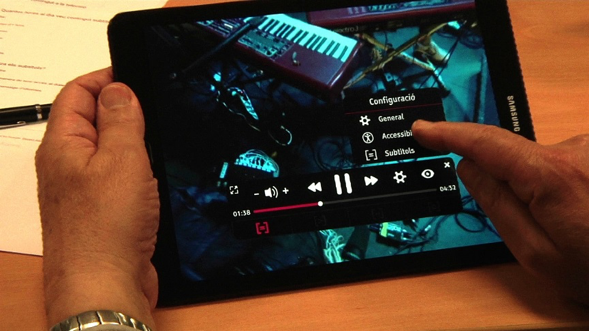
Test of user interface in a tablet device
The time foreseen for each individual user test was calculated about 1 hour and a half, but the real time for most of the participants was extended around 2 hours. In part, the extension of the tests was due to the user’s own activity and participation with new proposals, comments, queries and concerns. They also took the opportunity offered by the pilot to comment on details regarding the classic TV subtitling service, with special emphasis on live subtitling, which still requires an improvement in the quality and the still excessive delay of subtitles.
It should be noted the opinion of some users who had also participated in previous pilots. They commented the remarkable improvement in the development of the ImAc player, which now includes new features and options based on their requirements.
In summary, the pilot allowed us to gather new information and proposals, positive and negative opinions that will be used by the consortium to refine and improve the developments following the iterative user centred design process. Design for users with users.
The full details about the results of this pilot will be published in Deliverable 5.6 in next month.

